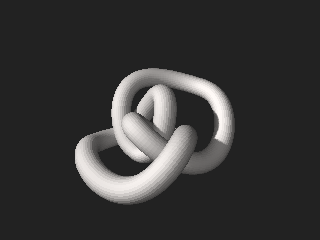
In mathematics, a Lie group is a group that is also a differentiable manifold.

In mathematics, topology is concerned with the properties of a geometric object that are preserved under continuous deformations, such as stretching, twisting, crumpling, and bending; that is, without closing holes, opening holes, tearing, gluing, or passing through itself.

Algebraic topology is a branch of mathematics that uses tools from abstract algebra to study topological spaces. The basic goal is to find algebraic invariants that classify topological spaces up to homeomorphism, though usually most classify up to homotopy equivalence.

In mathematics, topological groups are the combination of groups and topological spaces, i.e. they are groups and topological spaces at the same time, such that the continuity condition for the group operations connects these two structures together and consequently they are not independent from each other.

In mathematics, particularly in complex analysis, a Riemann surface is a one-dimensional complex manifold.
In mathematics, complex geometry is the study of geometric structures and constructions arising out of, or described by, the complex numbers. In particular, complex geometry is concerned with the study of spaces such as complex manifolds and complex algebraic varieties, functions of several complex variables, and holomorphic constructions such as holomorphic vector bundles and coherent sheaves. Application of transcendental methods to algebraic geometry falls in this category, together with more geometric aspects of complex analysis.
In mathematics, a unitary representation of a group G is a linear representation π of G on a complex Hilbert space V such that π(g) is a unitary operator for every g ∈ G. The general theory is well-developed in the case that G is a locally compact (Hausdorff) topological group and the representations are strongly continuous.

In abstract algebra, a finite group is a group whose underlying set is finite. Finite groups often arise when considering symmetry of mathematical or physical objects, when those objects admit just a finite number of structure-preserving transformations. Important examples of finite groups include cyclic groups and permutation groups.
In mathematics, an algebraic surface is an algebraic variety of dimension two. In the case of geometry over the field of complex numbers, an algebraic surface has complex dimension two and so of dimension four as a smooth manifold.
In mathematics, the spectrum of a C*-algebra or dual of a C*-algebraA, denoted Â, is the set of unitary equivalence classes of irreducible *-representations of A. A *-representation π of A on a Hilbert space H is irreducible if, and only if, there is no closed subspace K different from H and {0} which is invariant under all operators π(x) with x ∈ A. We implicitly assume that irreducible representation means non-null irreducible representation, thus excluding trivial (i.e. identically 0) representations on one-dimensional spaces. As explained below, the spectrum  is also naturally a topological space; this is similar to the notion of the spectrum of a ring.
In mathematics, a locally compact group is a topological group G for which the underlying topology is locally compact and Hausdorff. Locally compact groups are important because many examples of groups that arise throughout mathematics are locally compact and such groups have a natural measure called the Haar measure. This allows one to define integrals of Borel measurable functions on G so that standard analysis notions such as the Fourier transform and spaces can be generalized.
In algebraic geometry, the Kodaira dimensionκ(X) measures the size of the canonical model of a projective variety X.

In mathematics, a manifold is a topological space that locally resembles Euclidean space near each point. More precisely, an -dimensional manifold, or -manifold for short, is a topological space with the property that each point has a neighborhood that is homeomorphic to an open subset of -dimensional Euclidean space.
In mathematics, a Hilbert manifold is a manifold modeled on Hilbert spaces. Thus it is a separable Hausdorff space in which each point has a neighbourhood homeomorphic to an infinite dimensional Hilbert space. The concept of a Hilbert manifold provides a possibility of extending the theory of manifolds to infinite-dimensional setting. Analogously to the finite-dimensional situation, one can define a differentiable Hilbert manifold by considering a maximal atlas in which the transition maps are differentiable.
In mathematics, the Enriques–Kodaira classification groups compact complex surfaces into ten classes, each parametrized by a moduli space. For most of the classes the moduli spaces are well understood, but for the class of surfaces of general type the moduli spaces seem too complicated to describe explicitly, though some components are known.
In mathematics, specifically geometry and topology, the classification of manifolds is a basic question, about which much is known, and many open questions remain.
In mathematics, semi-simplicity is a widespread concept in disciplines such as linear algebra, abstract algebra, representation theory, category theory, and algebraic geometry. A semi-simple object is one that can be decomposed into a sum of simple objects, and simple objects are those that do not contain non-trivial proper sub-objects. The precise definitions of these words depends on the context.





